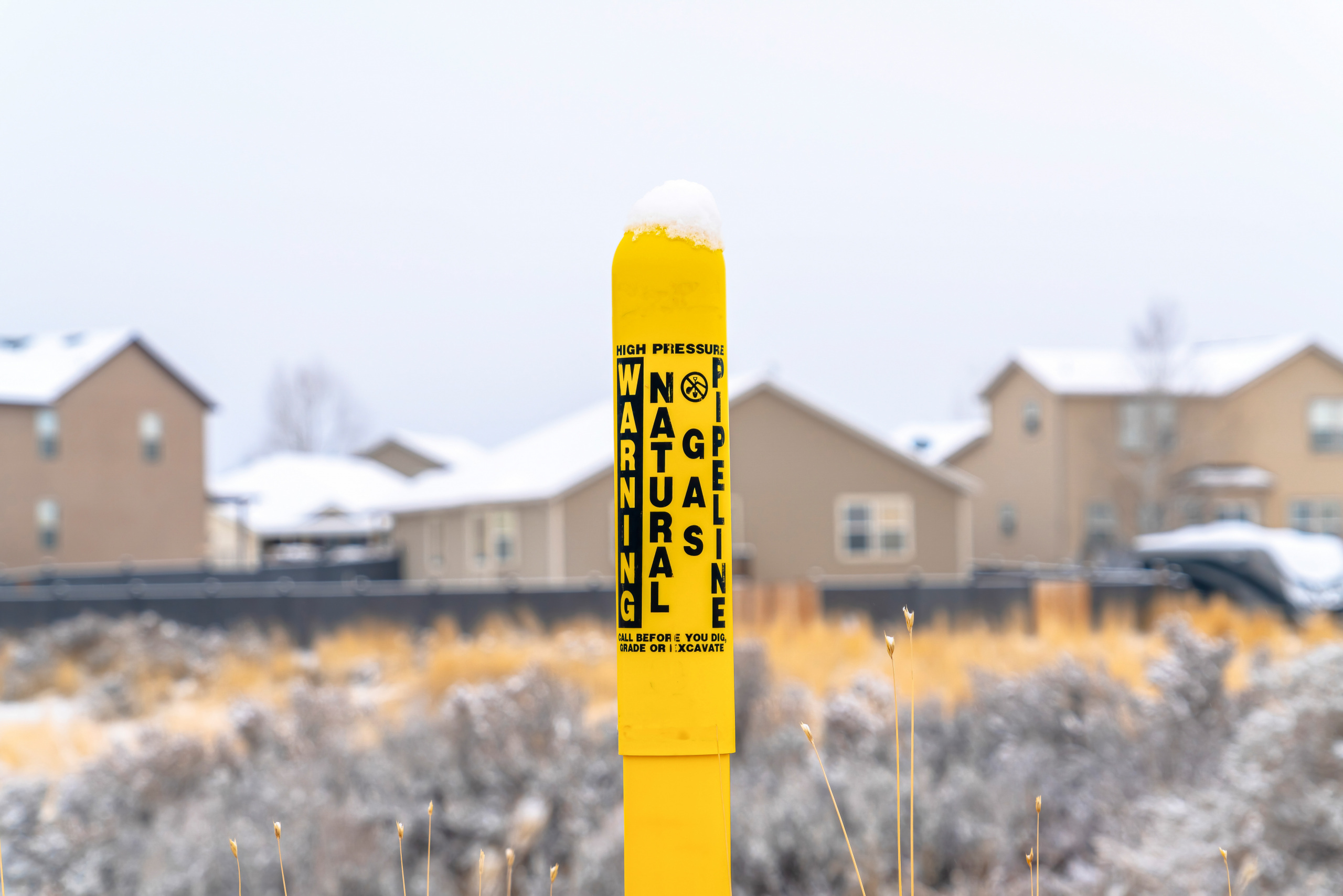
Methane Gas Leaks
Frequent leaks are resulting in death, injury and other damage to our health and environment
Methane gas (marketed as “natural gas”) has heated the homes of many Americans for over a century – and for over a century, it has been prone to leaks, putting communities and the environment in danger. With growing awareness of the impact of methane leaks on the climate, and with growing availability of safer alternatives, it is clear that gas has no place in a modern clean energy network.
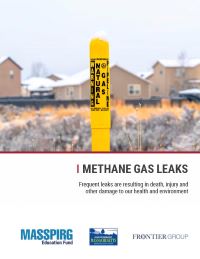
Downloads
Executive Summary
Methane gas (marketed as “natural gas”) has heated the homes of many Americans for over a century – and for over a century, it has been prone to leaks, putting communities and the environment in danger. With growing awareness of the impact of methane leaks on the climate, and with growing availability of safer alternatives, it is clear that gas has no place in a modern clean energy network.
Gas leaks and pipeline incidents are common and put public health and safety at risk.
● In 2010, a gas terminal failure in San Bruno, California, caused an explosion on the scale of a magnitude 1.1 earthquake. Eight people were killed and 58 were injured.[i] The event led to the creation of mandatory gas safety programs around the country.
● In 2018, high-pressure gas was accidentally released into low-pressure gas distribution lines in Merrimack Valley of Massachusetts, starting more than 80 fires in three towns.[ii] An 18-year-old was killed, and thousands of people went without gas for months.[iii]
● In March 2022, a four-story apartment building in Silver Spring, Maryland, was destroyed in an explosion caused by a leak coming from a cut gas line.[iv] In total, 14 people were hospitalized and over 200 were displaced.[v]
A gas pipeline incident occurs somewhere in the U.S. approximately every 40 hours. From 2010 through nearly the end of 2021, almost 2,600 pipeline incidents related to the release of gas occurred in the United States that were serious enough to be reported to the federal government, 328 of which resulted in explosions. Those explosions and fires killed 122 people and injured 603.[vi]
The amount of gas leaking to the environment is far greater than captured in federal leak reporting or emissions estimates from the Environmental Protection Agency (EPA).[vii] A 2020 study, for example, estimated that there are more than a half million leaks in local gas distribution systems in the U.S., and that leakage from these systems was five times greater than the amount estimated by the EPA.[viii]
Table ES-1 Number of reported gas pipeline leaks by year
Gas can be released intentionally by a utility to lower pressure or empty pipelines for maintenance, or can be released unintentionally due to wear, equipment failure, natural causes, or accidental force or puncture. [ix]
Gas leaks contribute to global warming. Gas leaks reported to the federal government resulted in the release of 26.6 billion cubic feet of methane gas from 2010 through October 2021, equivalent in its effects on global warming to emissions from over 2.4 million passenger vehicles driven for a year. [x]
The EPA estimates that emissions from natural gas transmission and distribution systems and storage fell significantly between 1990 and 2016, but progress has slowed since.[xi] However, EPA reporting of greenhouse gas emissions from gas systems is likely incomplete. While EPA estimates that the rate of leaks throughout the gas supply chain is 2-3%, studies suggest leak rates throughout the supply chain are significantly higher – high enough that they offset any greenhouse gas benefit of gas over coal.[xii]
The frequency of major gas leak incidents has not declined significantly since 2010, despite the time and money that gas utilities have spent to address leaks in the wake of several deadly explosions. (See figure below.)
Figure ES-1: Reported gas pipeline leak incidents, 2010 to 2020[xiii]
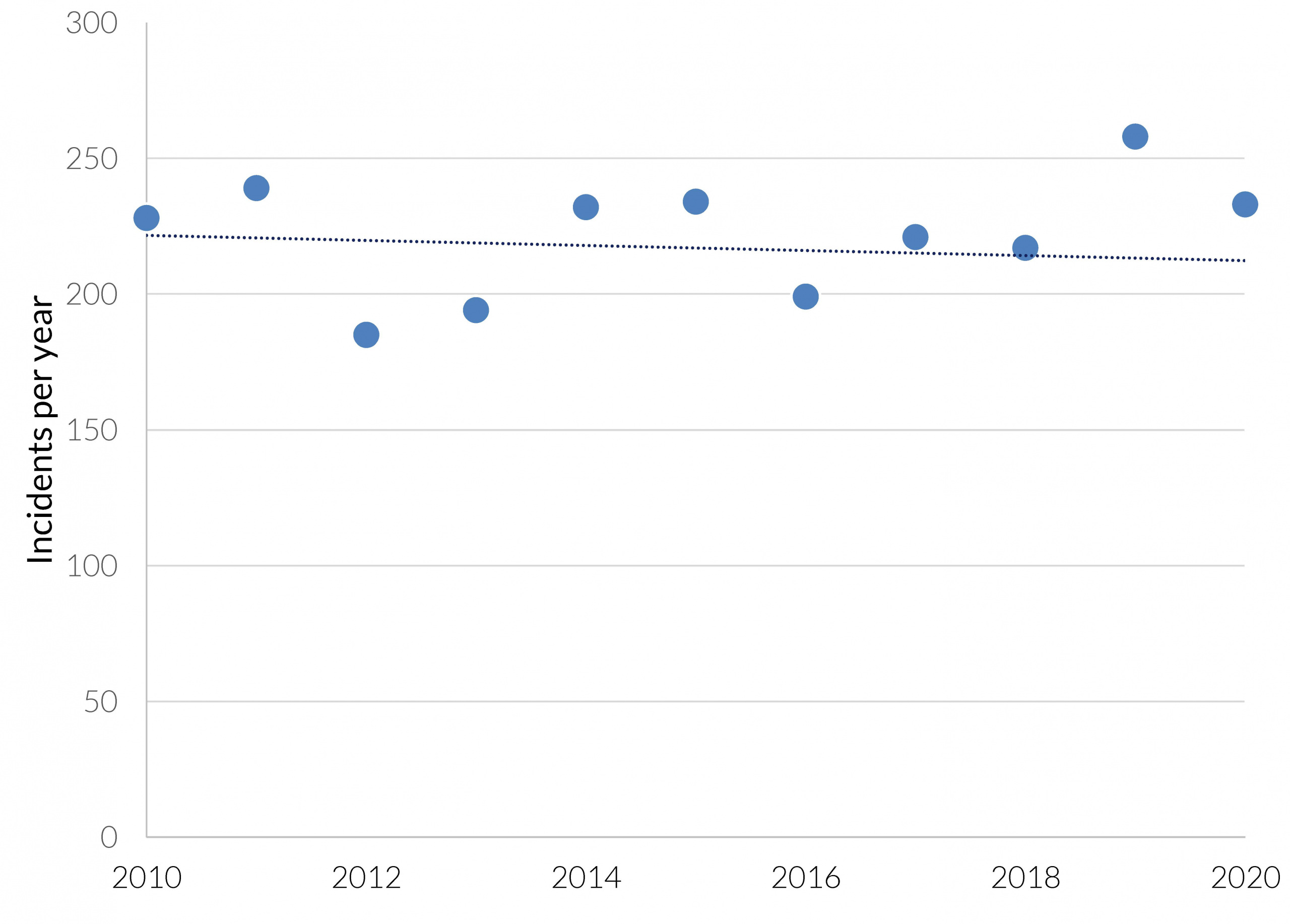
● In states such as Illinois and Maryland, utility programs have prioritized complete system replacements over focused replacement of leak-prone infrastructure, resulting in the expenditure of billions of dollars for limited public safety benefit.[xiv]
● While efforts to reduce leaks from gas distribution systems have made some progress, reliance on methane gas is inconsistent with the need to decarbonize the nation’s energy system by mid-century. As a result, investments in gas systems beyond those needed to protect public health and safety could become “stranded,” diverting attention and resources that should be used to transition the nation’s energy system to truly clean forms of energy.
The consistent risks posed by gas leaks – coupled with the urgent need to address climate change – mean that the nation should prioritize electrifying buildings while taking immediate, focused actions to address the biggest safety risks.
Notes:
[i] Magnitude 1.1 earthquake: John Amos, SkyTruth, San Bruno Pipeline Explosion, 12 September 2010, archived at https://web.archive.org/web/20220519205856/https://skytruth.org/2010/09/… killing eight and injuring 58: Rebecca Bowe and Lisa Pickoff-White, “Five years after deadly San Bruno explosion: Are we safer?,” KQED, 8 September 2015, archived at https://web.archive.org/web/20220512144208/https://www.kqed.org/news/10667274/five-years-after-deadly-san-bruno-explosion-are-we-safer.
[ii] National Transportation Safety Board, Overpressurization of Natural Gas Distribution System, Explosions, and Fires in Merrimack Valley, Massachusetts, 13 September 2018, https://www.ntsb.gov/news/events/Documents/2019-PLD18MR003-BMG-abstract.pdf; 80 fires: Matt Rocheleau and Milton Valencia, “Columbia Gas has a plan for speedy pipe replacement. Is it safe?,” The Boston Globe, 19 September 2018, accessed at https://www.bostonglobe.com/metro/2018/09/19/gas-company-plan-for-speedy-replacement-work-raises-safety-fears/U84HWSti6FPoBOGJyU7tuM/story.html.
[iii] 18-year old: National Transportation Safety Board, Overpressurization of Natural Gas Distribution System, Explosions, and Fires in Merrimack Valley, Massachusetts, 13 September 2018, https://www.ntsb.gov/news/events/Documents/2019-PLD18MR003-BMG-abstract.pdf; months: “Thousands of homes in Merrimack Valley still without gas more than 2 months after blasts,” 7 News WHDH, 19 November 2018, archived at https://web.archive.org/web/20220519211542/https://whdh.com/news/thousan….
[iv] Matt Pusatory and Khalida Volou, “14 injured, all known residents accounted for after massive Silver Spring apartment fire and explosion,” WUSA, 3 March 2022, archived at https://web.archive.org/web/20220519211805/https://www.fox5dc.com/news/silver-spring-explosion-14-hurt-all-known-residents-accounted-for-officials-say; cut in gas line: Laura Wainman, “Fire chief: Silver Spring apartment explosion deemed ‘accidental,’” WUSA, 7 March 2022, archived at https://web.archive.org/web/20220523151442/https://www.wusa9.com/article….
[v] Alanea Cremen and Scott Broom, “Officials theorize maintenance work, cut gas pipe may be behind Silver Spring apartment explosion,” WUSA, 4 March 2022, archived at https://web.archive.org/web/20220523151622/https://www.wusa9.com/article….
[vii]Maryann R. Sargent et al., “Majority of U.S. urban natural gas emissions unaccounted for in inventories,” Proceedings of the National Academy of Sciences, 118(44)e2105804118, 25 October 2021, DOI: 10.1073/pnas.2105804118; Genevieve Plant et al., “Large fugitive methane emissions from urban centers along the U.S. East Coast,” Geophysical Research Letters, 46(14):8500-8507, DOI:10.1029/2019GL082635
[viii] Zachary D. Weller, Steven P. Hamburg and Joseph C. von Fischer, “A national estimate of methane leakage from pipeline mains in natural gas local distribution systems,” Environmental Science and Technology, 54(14):8958-8967, DOI: 10.1021/acs.est.0c00437, 10 June 2020.
[ix] U.S. Department of Transportation, Pipeline and Hazardous Materials Safety Commission, Instructions (Rev 10-11-2018) for Completing Form PHMSA F 7100-1, 11 October 2018, archived at https://web.archive.org/web/20220120064905/https://www.phmsa.dot.gov/sites/phmsa.dot.gov/files/docs/subdoc/3416/currentgdannualinstructionsphmsa-f-71001-1cy-2018-and-beyond.pdf.
[x] Volume of gas released: See methodology; U.S. Environmental Protection Agency, Coal Mine Methane Units Converter, accessed 23 March 2022 at https://www.epa.gov/cmop/coal-mine-methane-units-converter/. Assumes that gas lost is methane; pipeline gas is approximately 95 to 98 percent methane, per U.S. Environmental Protection Agency, Overview of the Oil and Natural Gas Industry, archived at https://web.archive.org/web/20220523135513/https://www.epa.gov/natural-gas-star-program/overview-oil-and-natural-gas-industry, 23 May 2022.
[xi] U.S. Environmental Protection Agency, Inventory of U.S. Greenhouse Gas Emissions and Sinks: 1990-2020 (Chapter 3: Energy), 15 February 2022, p. 3-91, archived at https://web.archive.org/web/20220520131945/https://www.epa.gov/system/fi….
[xii] EPA: Environmental Defense Fund, What Influence Will Switching to Natural Gas Have on Climate?
User Guide for Natural Gas Leakage Rate Modeling Tool, p. 1, archived at http://web.archive.org/web/20220119023821/https://www.edf.org/sites/default/files/US-Natural-Gas-Leakage-Model-User-Guide.pdf; Mason Inman, Emily Grubert and Zach Weller, The Gas Index Project, Gas Index Report 2020, 15 December 2020; Ramon A. Alvarez et al., “Greater focus needed on methane leakage from natural gas infrastructure,” Proceedings of the National Academy of Sciences, 109(17), DOI: 10.1073/pnas.1202407109, 9 April 2012; Zhang et. al, “Quantifying methane emissions from the largest oil producing basin in the U.S. from space,” ScienceAdvances, 6(17):eaaz5120, doi: https://doi.org/10.1126/sciadv.aaz5120, 22 April 2020; Ramon A. Alvarez et al., “Assessment of methane emissions from the U.S. oil and gas supply chain,” Science, 361(6398):186-188, DOI: 10.1126/science.aar7204, 21 June 2018.
[xiv] Abraham Scarr and Jeff Orcutt, Illinois PIRG Education Fund, Tragedy of Errors: The Peoples Gas Pipe Replacement Program Is a Poorly Designed, Mismanaged, Bad Investment for Chicago, June 2019, available at https://illinoispirg.org/sites/pirg/files/reports/Tragedyoferrors_scrn.pdf; Maryland Office of People’s Counsel, STRIDE: Frequently Asked Questions, 22 September 2021.
Topics
Find Out More

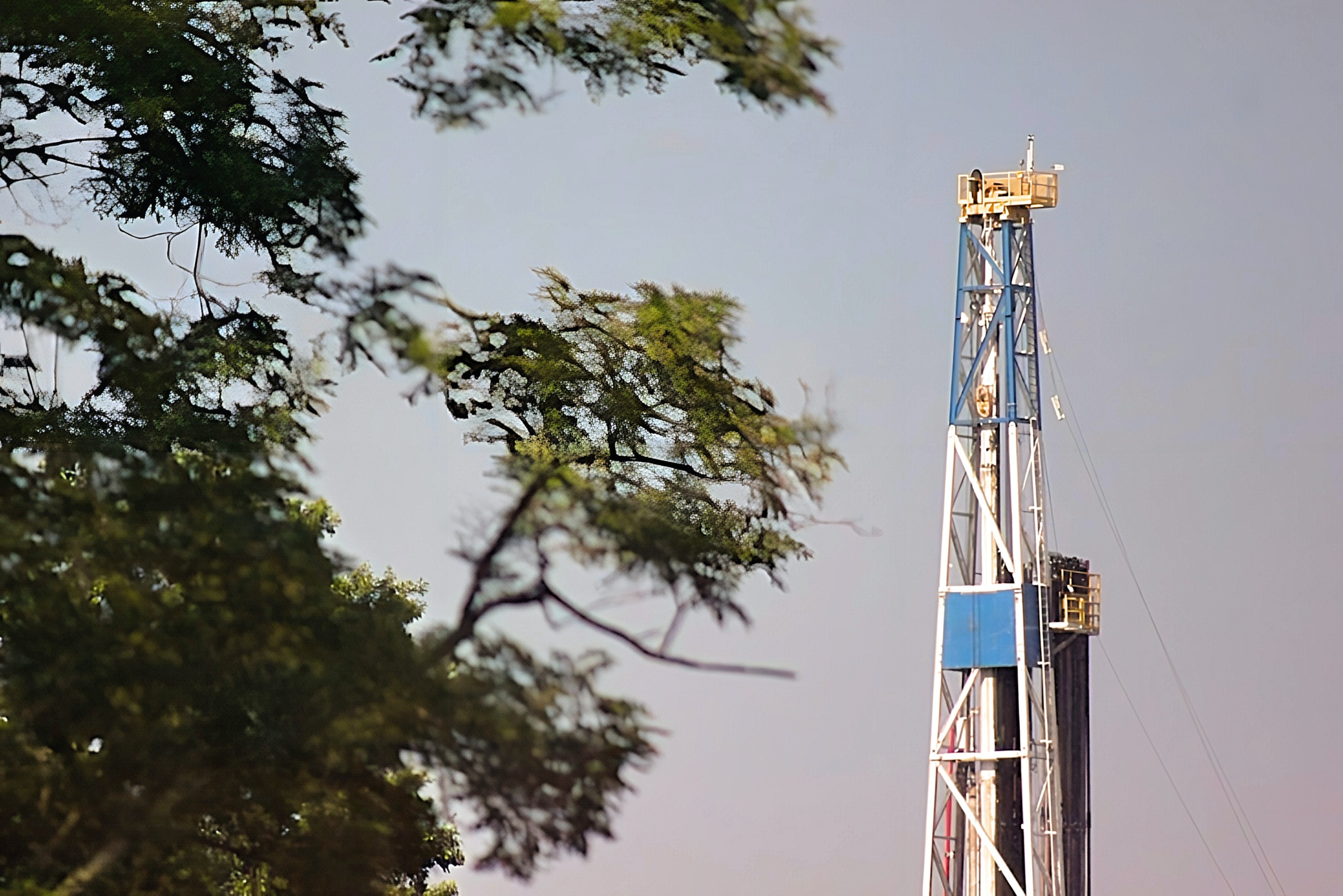
“Certified natural gas” is not a source of clean energy
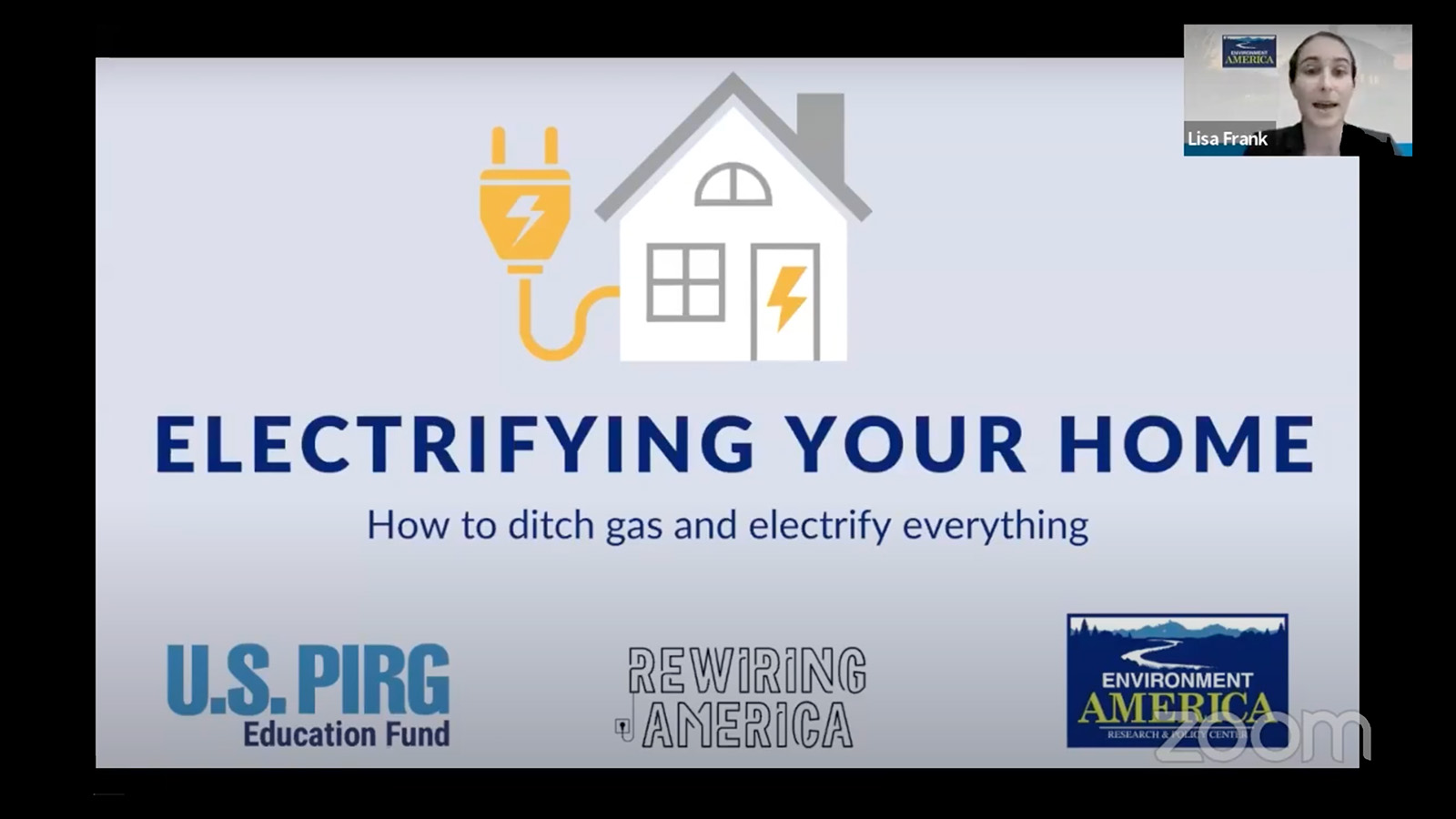
How you can electrify your home
